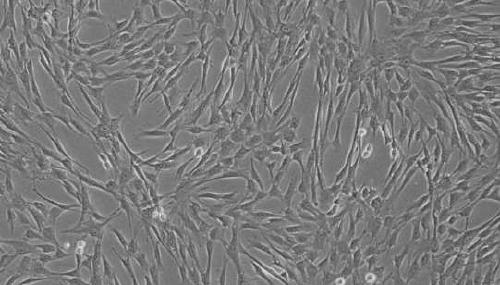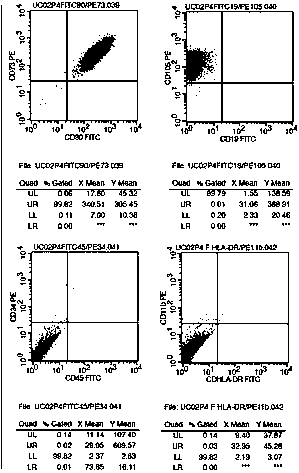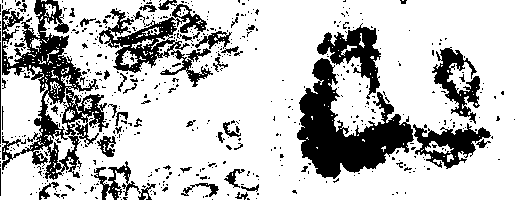Method for preserving umbilical cord membrane and preparing stem cells
A technology of stem cells and mesenchymal stem cells, which is applied in the field of isolating mesenchymal stem cells from the outermost amniotic membrane of the umbilical cord, can solve the problems of reduced number of cells, damage of mesenchymal stem cells, and long time required to achieve strong proliferation and differentiation potential , avoid fibroblasts and vascular endothelial cells, simple operation effect
- Summary
- Abstract
- Description
- Claims
- Application Information
AI Technical Summary
Problems solved by technology
Method used
Image
Examples
Embodiment 1
[0035] Embodiment 1, methods for cryopreservation of umbilical cord membrane, recovery and separation and expansion of stem cells after recovery.
[0036] The method of processing and cryopreserving umbilical cord membranes includes the following steps.
[0037] (1) Collection of umbilical cord: under aseptic conditions in the delivery room, with the informed consent of the parturient, the umbilical cord of no less than 20 cm was intercepted immediately after the delivery of the fetus of the healthy parturient according to the obstetric routine ligation and umbilical cut. Rinse the umbilical cord with umbilical cord cleaning solution, then sterilize it with medical alcohol, put the umbilical cord in the umbilical cord preservation box and store it at a constant temperature of 2-8°C in a medical blood collection box. 4ml of peripheral blood was extracted from the mother for virus detection; 4ml of umbilical cord blood was extracted from the placenta for microbial detection.
...
Embodiment 2
[0047] Embodiment 2. Freezing storage of umbilical cord membrane, resuscitation and method for separation and expansion of stem cells after resuscitation
[0048] With reference to the method of Example 1, the revived umbilical cord membrane began to have adherent cells crawling out on the 7th day of culture, and the cell confluence reached 70% on the 13th day of culture. After the confluence reached more than 80%, the cells were digested with trypsin and subcultured into T25 culture flasks for culture. On the 18th day, the confluence reached 90%. After 2 passages, the cell purity reached more than 95%.
Embodiment 3
[0049] Embodiment 3. Freezing storage, resuscitation of umbilical cord membrane and separation and expansion method of stem cells after resuscitation
[0050] With reference to the method of Example 1, the revived umbilical cord membrane began to have adherent cells crawling out on the 8th day of culture, and the cell confluence reached 70% by the 14th day of culture. After the confluence reached more than 80%, the cells were trypsinized and subcultured into T25 culture flasks for culture. The confluence reached 90% on the 19th day. After 2 passages, the cell purity reached more than 95%.
PUM
 Login to View More
Login to View More Abstract
Description
Claims
Application Information
 Login to View More
Login to View More - R&D Engineer
- R&D Manager
- IP Professional
- Industry Leading Data Capabilities
- Powerful AI technology
- Patent DNA Extraction
Browse by: Latest US Patents, China's latest patents, Technical Efficacy Thesaurus, Application Domain, Technology Topic, Popular Technical Reports.
© 2024 PatSnap. All rights reserved.Legal|Privacy policy|Modern Slavery Act Transparency Statement|Sitemap|About US| Contact US: help@patsnap.com










